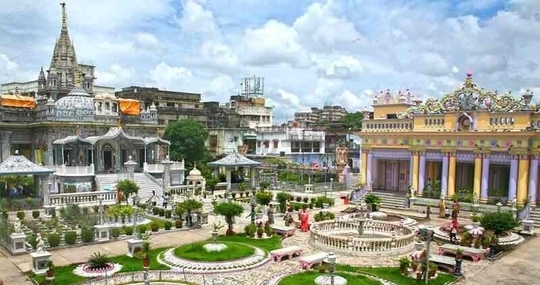Kolkata Tirth

Mulnayak: Shri Sheetalnath Bhagawan in a Padmasana Posture, White colored idol that is 70 centimeters in height. Tirth Place: The temple is in Sham Bazaar of Kolkata city. This temple is also called as Shri Badridas Temple. History: This temple, built in 1867, has an interesting history. In this area, there is a Jain shrine called 'Dada Bari' dedicated to some prominent Jain saints like Dada Jindutt Suriji, etc. It is here that Sri Badridas, the founder of the temple, used to come to pay homage to the saints and one day, seeing cruelty being done to the aquatics of a nearby tank, bought the whole plot, and with the inspiration from his mother (Srimati Kushal Kuvri), constructed this temple. It is very significant that the temple is dedicated to Sri Sitalnath, whose name literally means the "lord and protector of aquatics". An interesting story surrounds the image of Sri Sitalnath that is installed in the sanctuary. It is said that after completing the construction, Sri Badridas consulted his preceptor, Sri Kalyan Suriji, as to which of the twenty-four tirthankaras this temple should be dedicated to and he was told that it should be Sri Sheetalnath. In accordance with his advice, he went on a long journey in search of a suitable image but was baffled everywhere in this search. At last he arrived at Agra, and while attending a ceremonial procession, got into conversation with an unknown holy man to whom he narrated the purpose of his coming. Pondering over it for a while, the holy man took him to a place and pointed out that beneath the surface he would be found the figure he was looking for. Next day he went with the holy man to that place and had the Earth dug up. While digging, he came across a staircase, leading down to what appeared to be a cave. Sri Badridas immediately descended down the steps and at a considerable depth he was surprised to find a temple, in which he saw this figure of Sri Sitalnath. The oil-lamp was still burning and it appeared as if someone had just left the place after offering worship. With due reverence, Sri Badridas immediately had the image taken out. On ascending the surface, he looked for the holy man who had directed him to the spot, but he was nowhere to be seen. The image was then brought to Kolkata and installed in this temple by his preceptor, Sri Kalyan Suriji. Temple Complex: The interiors of the temple are lavishly decorated with high quality mirrors and glasses. The quintessential Jain temple chandeliers (Jhar Battis) decorate the ceilings adding beauty to the top. The floor is intricately paved with marble and embellished with exquisite floral designs that provide a classy look to this colossal architecture. In the interior, the temple walls are adorned by paintings of the renowned painter Ganesh Muskare. The Temple gateway is splendidly eye-catching. Information about the founder: The founder of this temple, Sri Rai Badridas Bahadur was born in the famous family of Srimals of northern India on November 26 in the year 1832. Sri Badridas migrated from Lucknow to Kolkata in the year 1853 and was not particularly rich. Within a short period of time through honesty, intellect and perseverance, Sri Badridas became not only the leading jeweller of the city but was also appointed as the Mookim (State Jeweller) to the Governor General of India in the year 1871. He established his own firm named as Rai Badridas Bahadur and Sons. In the historic Delhi Darbar, Sri Badridas was given the honour of Rai Bahadur and award of Empress of India from Lord Lytton. He built a beautiful Kothi in Harrison Road, Kolkata, which also featured in “Glimpses of Bengal” published in the year 1905. He purchased a plot near Dadabari, Kolkata where he wanted to build a farmhouse, but as per the wishes of his mother he built the existing temple, which took around 25 years and was beautifully designed in the best possible way. He also built some other temples during his lifetime such as the Parasnath Tonk, highest peak of Parashnath Hills in Shikharji, Madhuban and a temple in Purimatal in Allahabad dedicated to Shri Adinathji. Sri Badridas was also very much socially active and as part of social responsibility he did various works for the development of the society and the city such as establishment of Johari Bazaar Dharmakanta Association, founder of Calcutta Pinjrapole Society, Founder President of Bengal National Chamber of Commerce, the first ever National Chamber of Commerce in India in the year 1873. He also contributed to British Indian Association, Banaras Hindu University and other similar organizations. He died at the age of 83 in the year 1914. He was the first person who got the permission from the Kolkata Municipality Corporation (then Calcutta Municipal Corporation) to have his last rites performed in his own premises and not at the general place as is done for all other citizens.
See 24 Bhav Tirth